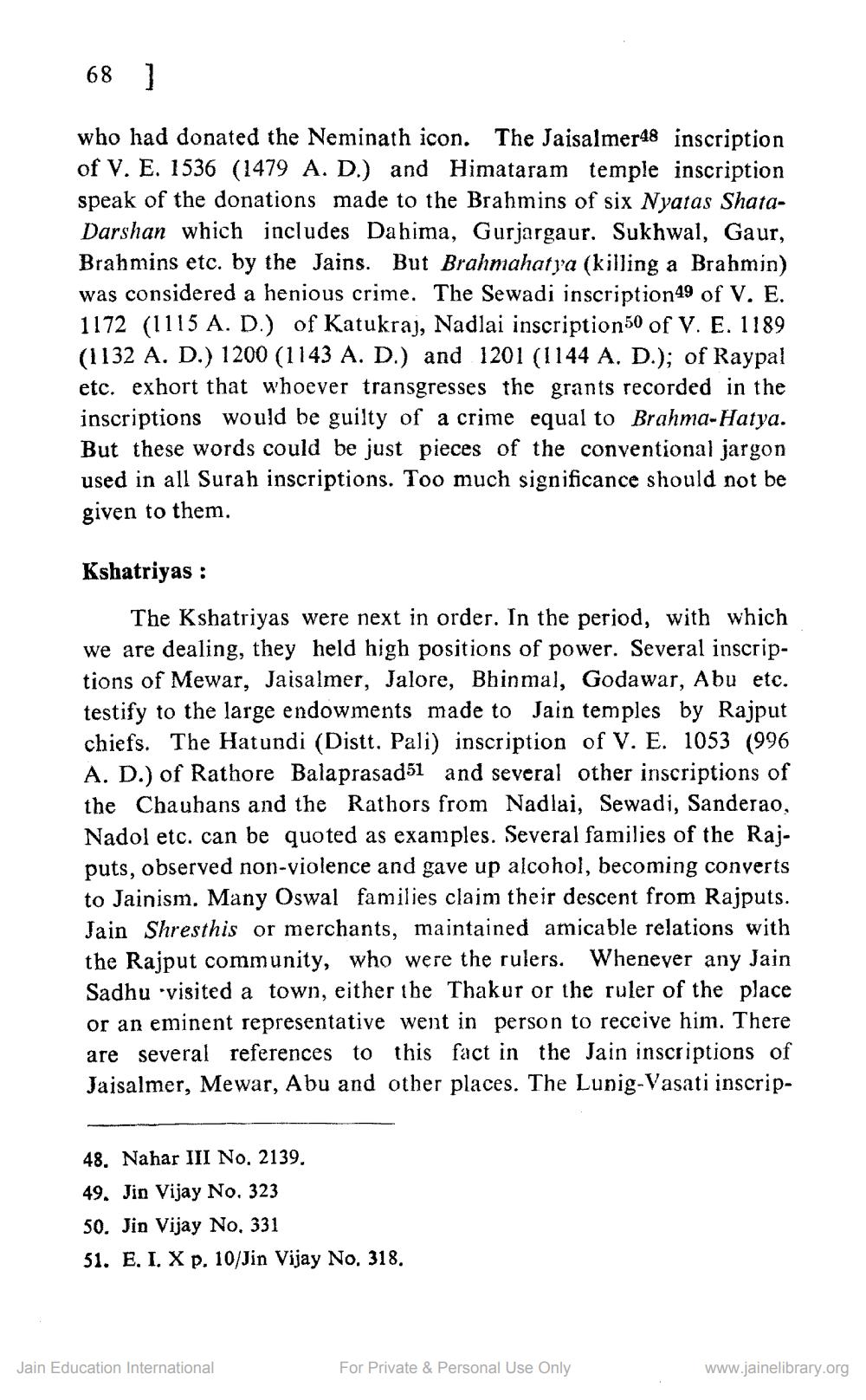________________
68 1
who had donated the Neminath icon. The Jaisalmer48 inscription of V. E. 1536 (1479 A. D.) and Himataram temple inscription speak of the donations made to the Brahmins of six Nyatas ShataDarshan which includes Dahima, Gurjargaur. Sukhwal, Gaur, Brahmins etc. by the Jains. But Brahmahatya (killing a Brahmin) was considered a henious crime. The Sewadi inscription49 of V. E. 1172 (1115 A. D.) of Katukraj, Nadlai inscription50 of V. E. 1189 (1132 A. D.) 1200 (1143 A. D.) and 1201 (1144 A. D.); of Raypal etc. exhort that whoever transgresses the grants recorded in the inscriptions would be guilty of a crime equal to Brahma-Hatya. But these words could be just pieces of the conventional jargon used in all Surah inscriptions. Too much significance should not be given to them.
Kshatriyas :
The Kshatriyas were next in order. In the period, with which we are dealing, they held high positions of power. Several inscriptions of Mewar, Jaisalmer, Jalore, Bhinmal, Godawar, Abu etc. testify to the large endowments made to Jain temples by Rajput chiefs. The Hatundi (Distt. Pali) inscription of V. E. 1053 (996 A. D.) of Rathore Balaprasad51 and several other inscriptions of the Chauhans and the Rathors from Nadlai, Sewadi, Sanderao, Nadol etc. can be quoted as examples. Several families of the Rajputs, observed non-violence and gave up alcohol, becoming converts to Jainism. Many Oswal families claim their descent from Rajputs. Jain Shresthis or merchants, maintained amicable relations with the Rajput community, who were the rulers. Whenever any Jain Sadhu visited a town, either the Thakur or the ruler of the place or an eminent representative went in person to receive him. There are several references to this fact in the Jain inscriptions of Jaisalmer, Mewar, Abu and other places. The Lunig-Vasati inscrip
48. Nahar III No. 2139.
49. Jin Vijay No. 323
50. Jin Vijay No. 331
51. E. I. X p. 10/Jin Vijay No. 318.
Jain Education International
For Private & Personal Use Only
www.jainelibrary.org




